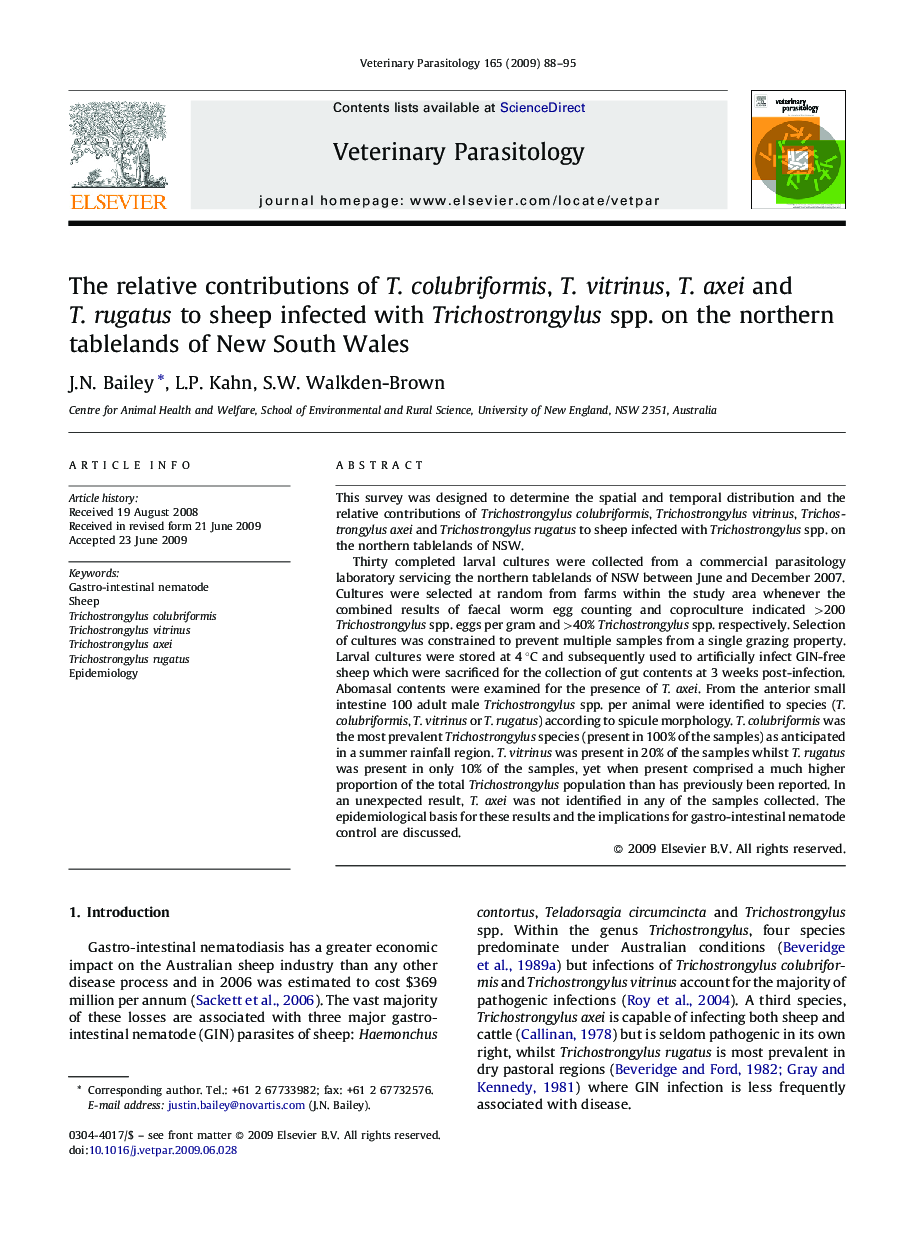| Article ID | Journal | Published Year | Pages | File Type |
|---|---|---|---|---|
| 2470990 | Veterinary Parasitology | 2009 | 8 Pages |
This survey was designed to determine the spatial and temporal distribution and the relative contributions of Trichostrongylus colubriformis, Trichostrongylus vitrinus, Trichostrongylus axei and Trichostrongylus rugatus to sheep infected with Trichostrongylus spp. on the northern tablelands of NSW.Thirty completed larval cultures were collected from a commercial parasitology laboratory servicing the northern tablelands of NSW between June and December 2007. Cultures were selected at random from farms within the study area whenever the combined results of faecal worm egg counting and coproculture indicated >200 Trichostrongylus spp. eggs per gram and >40% Trichostrongylus spp. respectively. Selection of cultures was constrained to prevent multiple samples from a single grazing property. Larval cultures were stored at 4 °C and subsequently used to artificially infect GIN-free sheep which were sacrificed for the collection of gut contents at 3 weeks post-infection. Abomasal contents were examined for the presence of T. axei. From the anterior small intestine 100 adult male Trichostrongylus spp. per animal were identified to species (T. colubriformis, T. vitrinus or T. rugatus) according to spicule morphology. T. colubriformis was the most prevalent Trichostrongylus species (present in 100% of the samples) as anticipated in a summer rainfall region. T. vitrinus was present in 20% of the samples whilst T. rugatus was present in only 10% of the samples, yet when present comprised a much higher proportion of the total Trichostrongylus population than has previously been reported. In an unexpected result, T. axei was not identified in any of the samples collected. The epidemiological basis for these results and the implications for gastro-intestinal nematode control are discussed.
